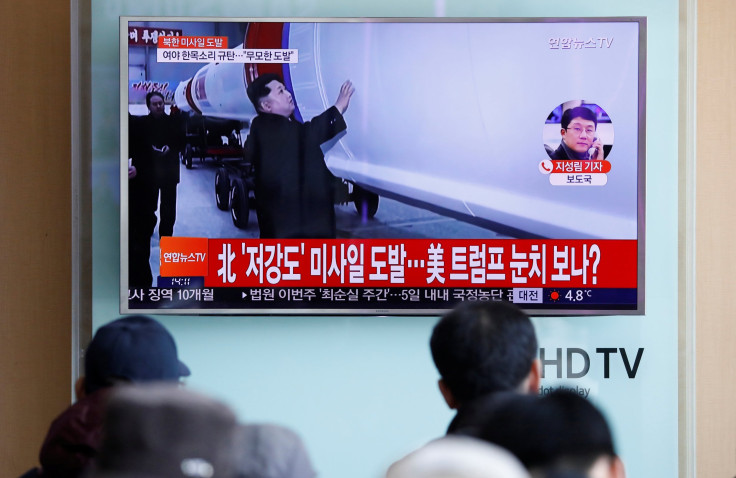North Korea War? South Korea Plans Ballistic Missile Test In Retaliation To Kim Jong Un's Missile Launch

UPDATE: 5:47 a.m. EST — The United Nations Security Council will hold an urgent meeting Monday over North Korea’s new ballistic missile test Sunday. The missile, which Pyongyang claims is capable of carrying a nuclear warhead, was launched into the East Sea, also known as the Sea of Japan.
North Korea’s latest provocation gave rise to concerns over the nuclear advancement of the reclusive country. Russian foreign ministry said Monday that it was concerned by the latest North Korean missile test, which is contrary to U.N. resolutions, RIA news agency reported.
China’s foreign ministry also reportedly expressed opposition to Pyongyang’s actions.
Original story:
South Korea is considering test-firing a ballistic missile in response to North Korea's medium-range ballistic missile test early Sunday into the East Sea, Seoul's military officials said Monday. Pyongyang claimed Monday the ballistic missile it test-fired a day earlier is capable of carrying a nuclear warhead.
"In response to North Korea's missile launch Sunday, we are reviewing measures to discard security concerns and show our determination to retaliate against any aggression by the North," a defense ministry official told Yonhap News Agency.
South Korean military are reportedly planning to launch the Hyunmoo-2A with a range of more than 185 miles or the Hyunmoo-2B with a range of over 310 miles. Photos or videos of the missile launch will most likely be used to publicize Seoul's move amid the North's provocation.
"There is also an opinion in the military that it will be more effective to unveil the test-firing scene of a new 800 kilometer (497 miles) ballistic missile which is in the final stage of development," the official said.
Hyunmoo missiles are a core asset in the Korea Massive Punishment & Retaliation (KMPR) plan, which is aimed at targeting the North's military leadership to neutralize key figures and infrastructure if the reclusive country shows clear signs of the imminent use of nuclear weapons, according to the South Korean defense ministry.
North Korea's missile test Sunday coincided with Japanese Prime Minister Shinzo Abe’s visit to the United States. The missile was fired from around Banghyon in North Pyongan Province, South Korean authorities said. It flew about 310 miles, ending up in the sea between the Korean Peninsula and Japan. North's state-run Korean Central News Agency said leader Kim Jong Un supervised the test of the Pukguksong-2 missile — the first missile test since U.S. President Donald Trump took office.
On Sunday, Trump responded to the missile test with an assurance to the visiting Abe that Washington was committed to the security of its key Asian ally. However, Trump did not directly name North Korea in his statement.
"I just want everybody to understand and fully know that the United States of America stands behind Japan, its great ally, 100 percent," he said, without elaborating.
Abe denounced Pyongyang's missile launch as "absolutely intolerable" while top government spokesman Yoshihide Suge told reporters in Tokyo it was "clearly a provocation to Japan and the region."
South Korea, the U.S. and Japan have asked the United Nations Security Council to convene an emergency meeting to discuss countermeasures against North Korea's latest missile provocation, according to reports. The meeting is expected to be held Monday afternoon, Agence France-Presse reported. South Korea's foreign ministry issued a statement calling the missile test an "explicit" violation of UNSC resolutions against North Korea.
Last month, the North Korean foreign ministry threatened to launch an intercontinental ballistic missile and noted it developed the missile to boost its self-defense capabilities and to counter “the ever more undisguised nuclear war threat from the U.S.”
© Copyright IBTimes 2025. All rights reserved.





















